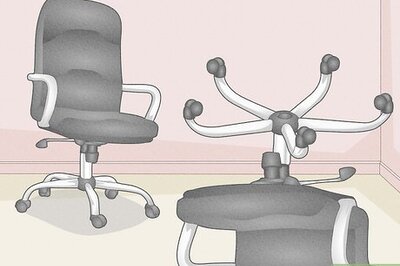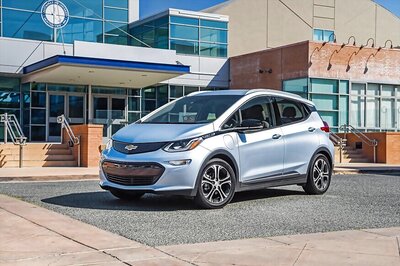
views
Are the upcoming Lok Sabha elections to be fought on the state of the Indian economy and its jobless growth or will national security trump every economic concern? Till the day India decided to strike back to avenge the Pulwama attacks, most Indians had concurred that the fragile state of the economy was the single biggest issue for the upcoming mandate.
But the IAF strikes on Pakistani soil changed the narrative almost overnight. Now, the ruling party believes national security is topmost concern on voters’ mind. As it seeks to shift the narrative to keep the discourse around the neighbouring country and its actions, the latest growth numbers need to be highlighted.
Inflation has begun edging up as food prices show some uptick, after remaining far below expectation for months. Simultaneously, industrial production has begun to slow down and many experts see it remaining flat, if not declining further for the next few months.
These twin developments mean some policy action – euphemism for another rate cut by the RBI – can be contemplated. If the RBI does follow up on this expectation and considers a rate cut, it may aid the NDA government further in its pre-poll narrative.
The first thing the latest data shows is a slowing industrial output in January. The Index of Industrial Production (IIP) grew by a mere 1.17% last month, against 7.5% in January 2018 and 2.4% in December 2018. Ratings agency CARE Ratings said in a statement that this moderation in IIP growth was “in line with slowdown in the core sector growth in January 2019 to a 19-month low level on account of contraction in crude oil, refinery and electricity production.”
Now, a look at the second set of numbers. As production slowed down, inflation started to rise again. Government data showed Consumer price inflation (CPI) for the month of February came in at a four-month high of 2.6%. CPI was higher than January 2019 (2%) but still significantly lower than 4.4% seen in February last year.
During February, there was an increase in prices of cereals, meat and fish, eggs, oils and fats, non-alcoholic beverages and prepared meals even though prices of fruits and vegetables, pulses and sugar continued to show a deflationary trend.
So given a slowing production and rising inflation, demands for policy action (rate cut) have already begun. Soumya Kanti Ghosh, the Group Chief Economic Advisor of SBI, tweeted “Inflation rate finally edges up. Food prices show marginal acceleration. But Core declining and IIP low, enough firepower for policy support!”
CARE Ratings’ Chief Economist Madan Sabnavis said, “Headline inflation in the coming months is likely to inch upwards with the deflation in food inflation subsiding. It would, however, continue to be within the RBI’s target range for the remainder of the fiscal year (FY19) and move towards 3% by March end. In terms of monetary policy action, there is an even likelihood of a rate cut of 25 bps in the April 2019 policy.”
The economy may be hitting some bumps, in contracting industrial production or rising inflation but the political narrative still swirls around fabulous economic growth in the five years of the NDA government’s rule.
In a speech on March 2, Prime Minister Narendra Modi referred to the ‘’fastest growing” tag for the Indian economy to list out achievements of his government on the economic front.
He spoke of removing poverty at the fastest pace, having accelerated GDP growth also at the fastest pace since 1991, having tackled inflation the most effectively compared to any government since 1991. He also spoke of roads being constructed at the fastest pace, development of railways being done at the fastest pace, building houses for the poor at the fastest pace and attracting the highest FDI than any other government’s tenure.
It is interesting to see that in the nearly dozen speeches the PM has given this month at various fora, economic issues and his government’s alleged success in turning around the economy have not been at the forefront of his pitch for re-election.
Even Finance Minister Arun Jaitley, who has been rather active about issues facing the nation on his Facebook page, has steered clear of making his views known on the economy and has instead chosen to continuously speak on issues of national security in the run-up to the polls.
Analysts are already worried over an overall economic slowdown in 2019-20, on global headwinds and uncertainty in an election year and many have said the GDP growth may not touch 7% next fiscal. Whichever government comes to power, it will have to deal with this sobering reality.
(The author is a senior journalist. View expressed above are personal.)














Comments
0 comment